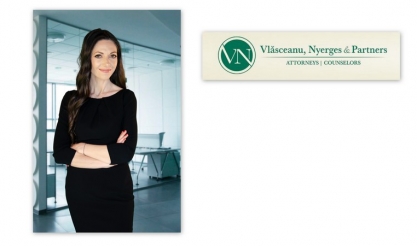
New MADR Norms – the Good, the Bad and the Ugly for renewables
25 Octombrie 2022 Mihaela Nyerges, Partner - Vlăsceanu, Nyerges & Partners
The Norms have been finally adopted earlier this month. Now that they are here, what do they mean for development of renewables?

|
The Norms have been finally adopted earlier this month. Now that they are here, what do they mean for development of renewables?
As a preliminary note, although the Norms were expected to clarify aspects related to projects exceeding 50 hectares, the Norms are limited to amending the procedure for removing the land from the agricultural circuit, in order to align it with the new provisions of the Land Fund Law.
1. Surface to be removed from agricultural circuit in case of dual use of the land
The biggest gain bought by the Norms is that they clarified which sections of the land should be removed from agricultural circuit in case of dual use of the land (power generation and agricultural activities). These are the sections on which ground level constructions are being erected: such as the pillars of the mounting structure, invertors, transformers substations, storage facilities, access roads.
Therefore, in case of PV projects, it is clarified that only the land affected by the pillars should be removed from agricultural circuit, not also the land corresponding to panels projection. Such could contribute substantially to the decrease of the land removal tax, which is one of the main costs in the development process. However, the practical impact is not that high, since (i) the dual use of the land is not allowed for arable land (which is frequently the land suitable for power generation projects) and (ii) the above principles do not apply to pastures (as we will explain below).
In view of the above, the applicant should submit, among other, the technical project outlining the type of project, the placement of the project components, occupation degree, the agricultural activities to be conducted, surfaces to be used for dual purpose.
2. Indirect limitation to developing power generation capacities inside farms only
One of the mandatory documents for removing the land from agricultural circuit in case of renewable generation capacities is the “technical project regarding the placement within the farms of the renewable power generation facilities used exclusively for the own consumption of the farms.”
This document implies that the power generation capacities may be erected only within farms and only for ensuring the power consumption of the farms. This is obviously a limitation which is no longer existing in the Land Fund Law (following the recent changes), and which may not be enacted through a legal enactment inferior to the Land Fund Law (such as the Norms).
In our view, this provision is the result of a clerical error, and we can only hope that it will be corrected shortly before causing (another) blockage in the development process.
3. Unclear land regime between land removal decision and building permit
The land is removed from the agricultural circuit through the decision adopted by the relevant county agricultural department. However, according to the Norms, the land can be registered with the Land Book as buildable land only later on in the development process, after obtaining the building permit.
It is therefore unclear the legal and tax regime of the land during the period between the land removal decision and the building permit.
4. Unclear rules for requalification of the land as agricultural in case of failed projects
The Norms provide that, if the investment works are not initiated within 5 years from the land removal decision, the land is requalified back as agricultural land “by virtue of law”, based on a notification sent to the relevant county agriculture department by the land removal beneficiary.
The requalification of the land as agricultural land “by virtue of law” seems to imply that this requalification occurs automatically upon the expiry of the 5 years period, without another administrative act being needed from the authorities. However, such principle seems to be contradicted by the fact that a notification should be sent by the beneficiary. Also, if the notification is sent long time after the 5-year term, it is not clear what will be the legal and tax regime of the land in the period between the expiry of the 5-year term and the notification.
Also, judging from the experience of the first wave of renewables (after which many landowners were stuck with intra muros lands and had to face lengthy court/administrative proceedings to change back the land destination), the beneficiary may no longer have any motivation to file such request. From this perspective, it seems more appropriate that the landowner should be also allowed to file such notification in case the superficies agreements are terminated due to failed projects.
5. No rules for pastures
The Norms do not set out the rules applicable to pastures. The reason for this is that the Norms are amending only the general regulation applicable to agricultural removal of all types of lands (pastures excluded), without touching the regulation dedicated to pastures removal from agricultural circuit.
It, therefore, remains to be seen whether the rules referred above regarding the dual use of the land will be replicated for pastures. Such rules will decisively influence the feasibility of developing renewables on pastures.
| Publicitate pe BizLawyer? |
  |
| Articol 958 / 4616 | Următorul articol |
| Publicitate pe BizLawyer? |
 |

Apreciată constant de ghidurile juridice internaționale pentru mandatele sofisticate, practica de Capital Markets a CMS România a devenit, prin consistență și profunzime, unul dintre pilonii reputației firmei pe piața locală și un reper important în rețeaua sa regională | De vorbă cu Cristina Reichmann (Partener) despre disciplina pregătirii pentru bursă, finețea aplicării regulilor de piață și forța unei echipe care lucrează articulat, cu roluri clare și obiective aliniate
MidEuropa preia pachetul majoritar în RBC, unul dintre cei mai importanți integratori de sisteme IT specializați în sectoarele de retail, banking și producție industrială din România. Trei firme de avocați au stat alături de investitorul de private equity
Echipa de Concurență a RTPR îmbină experiența cu precizia operațională, într-o formulă remarcată în Legal 500 și Chambers | De vorbă cu partenerii Valentin Berea și Roxana Ionescu despre modul de lucru care privilegiază consistența și rigoarea, cu rezultate ce confirmă profesionalismul și anvergura practicii
Mitel & Asociații dezvoltă o practică de litigii construită în jurul unui nucleu de avocați cu mare experiență, capabilă să ducă la capăt mandate complexe cu impact financiar și reputațional major, într-o piață în care disputele devin tot mai tehnice și mai dure | De vorbă cu Magda Dima (Partener) despre cum se construiește strategia, se evaluează riscurile și se formează generația nouă de litigatori
Victorie Mușat & Asociații pentru o companie membră a Grupului TIU: fapte de concurență neloială săvârșite ocult, sancționate de instanță | Hotărârea setează un reper jurisprudențial în materia concurenței neloiale
PNSA a asistat Grupul Société Générale în finalizarea vânzării BRD Pensii. Echipa, coordonată de Silviu Stoica (Avocat Asociat) și Florian Nițu (Avocat Asociat Coordonator)
Mușat & Asociații obține o nouă victorie definitivă pentru NUROL într-un proiect strategic de infrastructură rutieră
Record de promovări la Țuca Zbârcea & Asociații: trei noi parteneri și alte 16 numiri interne | Florentin Țuca, Managing Partner: ”Această serie de promovări, una dintre cele mai extinse din istoria noastră, coincide cu aniversarea a 20 de ani de la fondarea firmei, un moment ce reconfirmă valoarea, profesionalismul și dăruirea întregii noastre echipe”
MAXIM ̸ Asociații asistă EMSIL TECHTRANS în tranzacția imobiliară încheiată cu METSO pentru o proprietate industrială din Oradea
ZRVP, desemnată din nou „Firma de Avocatură a Anului din România” la Lexology Index Awards 2025 | Dr. Cosmin Vasile (Managing Partner): Un premiu obținut doi ani la rând spune un lucru simplu: că echipa merge în direcția bună. O astfel de recunoaștere confirmă nivelul profesional atins și, în același timp, ne obligă să rămânem la fel de exigenți
Fiscalitate ̸ Litigii Fiscale - Practica de Taxe a Kinstellar funcționează ca un „hub” integrat între drept, fiscalitate și finanțe, ce conturează un parcurs procedural previzibil, din faza de control al documentelor până la soluțiile finale ale instanței. Clienții beneficiază de pregătire proactivă, probatoriu robust și o echipă calibrată pentru litigii sofisticate | De vorbă cu Theodor Artenie (Counsel) și Raluca Botea (Counsel) despre tendințele ultimului an, prevenție, timing și modul de lucru al unei echipe recunoscute de directoarele internaționale
Mușat & Asociații asistă cu succes asocierea DOGUS în adjudecarea și semnarea contractului pentru cel mai mare proiect de infrastructură derulat în ultimii ani de o autoritate publică în București
-
BizBanker
-
BizLeader
- in curand...
-
SeeNews
in curand...











 RSS
RSS














































